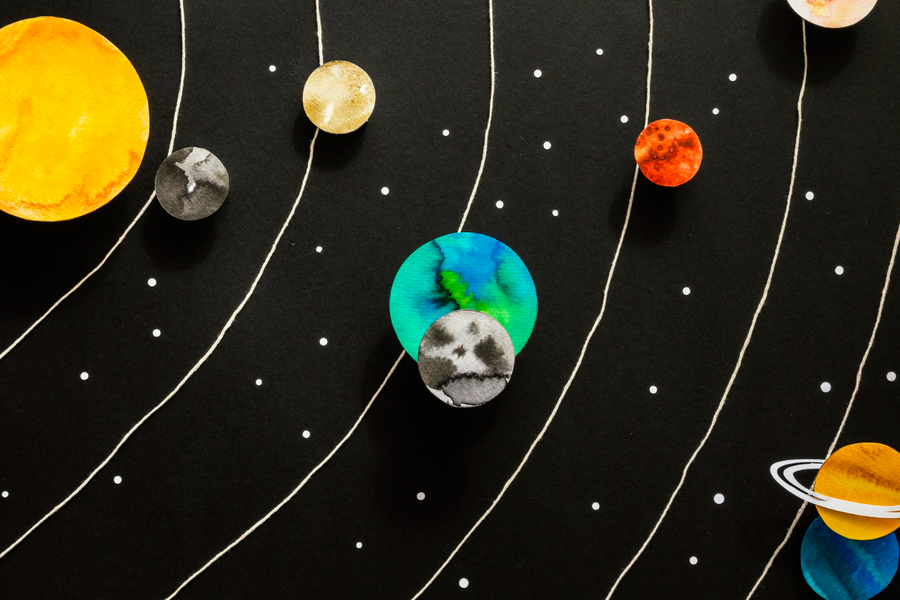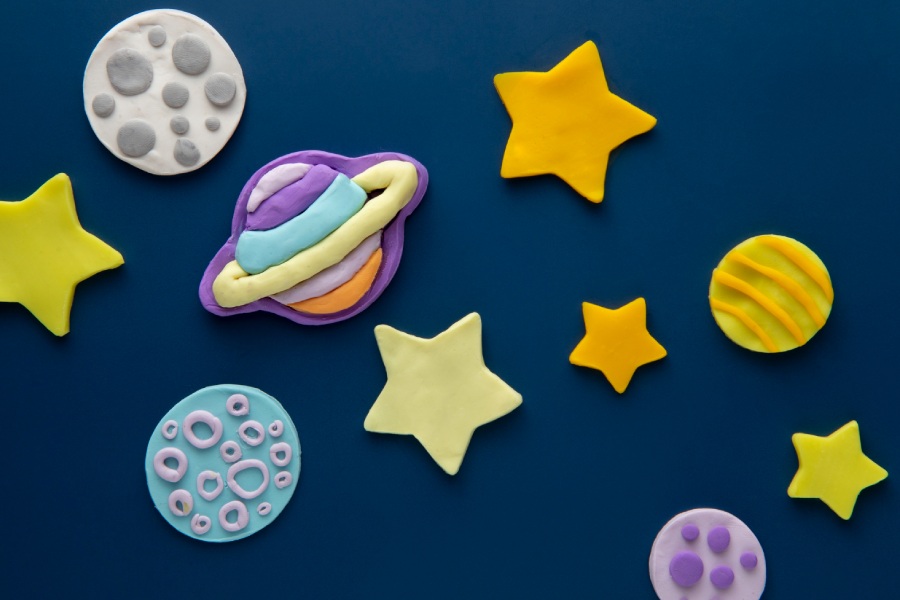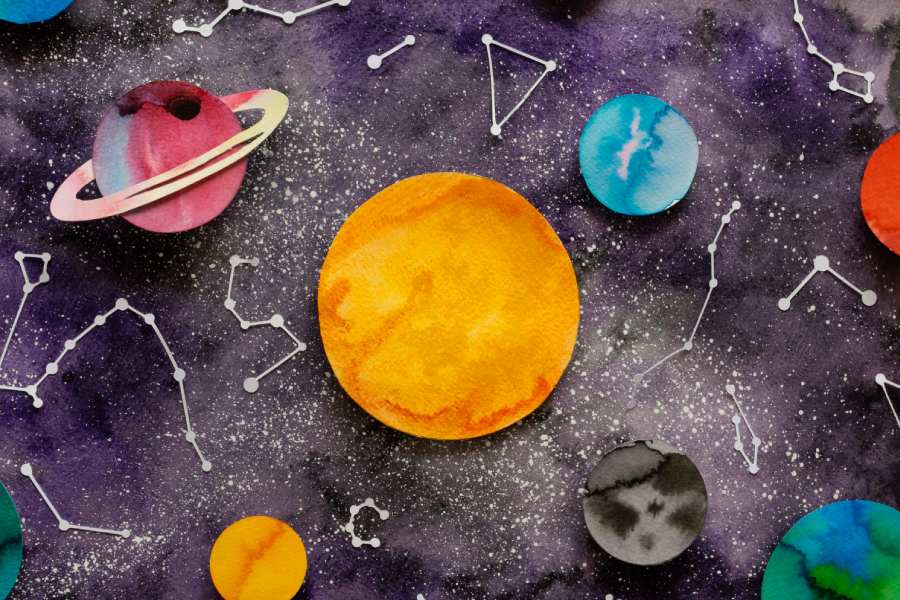The Solar System, a mesmerizing tapestry of celestial bodies, has fascinated humanity for centuries. Engaging in a Solar System project offers a thrilling opportunity to dive into the wonders of space, combining scientific exploration with creative expression. So, what are some of the best Solar System project ideas?
Explore the cosmos with creative Solar System model project ideas, from edible treats to DIY planetary orreries. This article shares fun and educational ideas for constructing planet models, crafting spacecraft, and recreating astronomical events.
Find tips on materials and step-by-step project instructions. Discover projects for various grade levels and more advanced challenges. Let imagination take flight as we delve into ways to explore Earth’s neighborhood and how to make a 3D Solar System.
Overview: Solar System Project Ideas
Embarking on a Solar System project offers myriad possibilities. A compelling idea involves crafting a scale model, vividly representing planets in their proportional sizes and distances from the Sun.
This tactile approach is ideal for captivating classroom presentations or science fairs. Alternatively, delving into astrobiology prompts exploration of life-supporting conditions, pondering the potential habitability of Solar System moons or planets.
Another engaging project could explore the fusion of mythology and astronomy. This could involve unraveling the stories behind planet names and correlating ancient myths with planetary characteristics to create a diverse and enriching learning experience.

Common Materials Needed for Solar System Projects
1. Bottle caps
Bottle caps of various sizes can be painted in different colors and used to represent the planets and other bodies in the Solar System. Students can create scale models of the Solar System using bottle caps, with larger caps for Jupiter and Saturn and smaller ones for Mercury and Mars. This allows them to visualize the relative sizes of the planets.
Specific project ideas with bottle caps
A simple project is to paint some silver bottle caps onto cardboard cutouts of circles to represent Mercury and its cratered surface. Using bottle caps for a model shows how Mercury is a small, dense planet. For more creativity, caps can be attached to paint stirring sticks and held up to demonstrate planetary orbits circling the classroom Sun.
2. Paper plates
Standard paper plates provide a nice, sturdy base for modeling the Solar System’s celestial bodies. Paper plates are inexpensive and easy to find. They can be painted, colored on with markers, have objects glued on, and be cut into shapes.
Project idea using paper plates
A basic paper plate project involves painting a black plate to depict outer space. Next, circles are cut from colored paper to signify planets, with sizes matching real planetary diameters. The planet circles are then glued onto the black plate, arranged in order from the Sun, with correct spacing to mimic each planet’s orbital radius.
3. Black construction paper
Black construction paper provides the perfect backdrop for Solar System projects. The stark black surface allows models of planets, moons, spacecraft, and other objects to stand out.
Significance of black construction paper
Black construction paper mimics the darkness of space between celestial bodies. This background visually emphasizes the contrast between space and brighter planets and objects.
4. White paint
White paint depicts the icy surfaces of moons like Europa and dwarf planets like Pluto. When flicked over models with a brush, white paint realistically imitates impact crater patterns across airless worlds.
Role of white paint
By mixing other colors with white, students can replicate the pale hues of planets like Uranus. White paint also perfectly represents Jupiter’s swirling upper cloud bands when applied onto a spherical surface.
5. Pom-pom balls
Pom-pom balls are a versatile crafting material useful for modeling planets. Their spherical shape makes them a natural choice, and they come in various sizes. Students can use pom-pom balls as the base for planet models, painting them with an appropriate color scheme.
Creative incorporation ideas
Pom-pom planet models can be hung from strings at different heights to represent each planet’s orbital radius. Painting them as Mars, Earth, Venus, and Mercury creates an inner Solar System model. Larger pom-poms become the gas giant Jupiter and ringed Saturn.
6. Styrofoam balls
Lightweight styrofoam balls are excellent for making detailed three-dimensional models of planets and moons. Styrofoam balls can be painted with acrylic paints to look like real Solar System objects.
Crafting three-dimensional planets
Students can use pens, sculpting tools, or their fingers to carve craters, valleys, mountains, and other features on the surface of styrofoam balls. After texturing the surface, accurate paint schemes complete highly detailed physical models.

Ideas for Hands-on Solar System Projects
Earth globe model with bottle caps
A creative Earth globe model can be made by painting a styrofoam ball blue for the oceans. Use bottle caps of varying sizes painted green and brown to represent the continents. Glue the bottle cap landmasses on the sphere based on a reference globe map.
Educational benefits
This allows students to learn about Earth’s spherical shape and continent geography by constructing their model globe. Suspending the globe and shining a flashlight on it further demonstrates day/night cycles caused by Earth’s rotation.
3D model of the Solar System
Students can build a 3D model of the Solar System using different materials like clay, paper mache, or painted wood to craft the Sun and planets.
Wondering how to make 3D model of Solar System? Attach the planet models to dowels cut proportional to each planet’s orbital radius. Then, insert the dowels into a sturdy cardboard base painted black for space.
Learning from the model
This hands-on model allows visualization of the different planetary orbits, relative planet sizes, and overall Solar System layout. Further enhancements could include adding LED lights for stars, modeling moons and comets, incorporating gears to demonstrate motions, etc.
Planet mobile with pom-pom balls
Paint styrofoam or yarn pom-pom balls to represent the planets and the Sun. Cut varying string lengths and tie planets onto them at proper scale distances. Attach strings to a coat hanger ring to create a hanging model of the Solar System.
Benefits of a hanging model
Pom-pom planets, being lightweight, enable students to build a precisely scaled orbital model easily. When suspended, air currents naturally move the planets, enhancing the interactive learning experience. The visual demonstration showcases planetary orbits around the Sun.
Additional features, such as planet fact cards, orbital tilt variations, and a paper Sun model at the center, add extra depth to the activity.
Constellation viewers
Students can create their constellation viewers with cardboard tubes, push pins, and strings. They poke holes in the tube for stars in various constellations seen from Earth. They can connect the dots and outline familiar constellations by threading strings between the star holes.
Educational benefits
Students can learn traditional constellation patterns actively by building their constellation viewers. By connecting star pins, they gain a hands-on understanding of how Earth views constellations and the alignment of stars. Completed viewer constellations can be compared against star charts for a comprehensive learning experience.

Conclusion
We’ve explored diverse Solar System project ideas like building an Earth globe, a 3D Solar System model, and a planet orbital mobile. These hands-on projects allow students to actively learn about the layout of our cosmic neighborhood in a memorable way.
Children can learn relative celestial motions and sizes by constructing their representations of planets, moons, etc. The creative projects bring the Solar System to life in classrooms and homes.
We hope you’ve gathered engaging project ideas to deepen our understanding of the planet’s place in space. May this article provide a spark for learning explorations beyond Earth that broaden cosmic perspectives and appreciation of our vast, fascinating universe.
